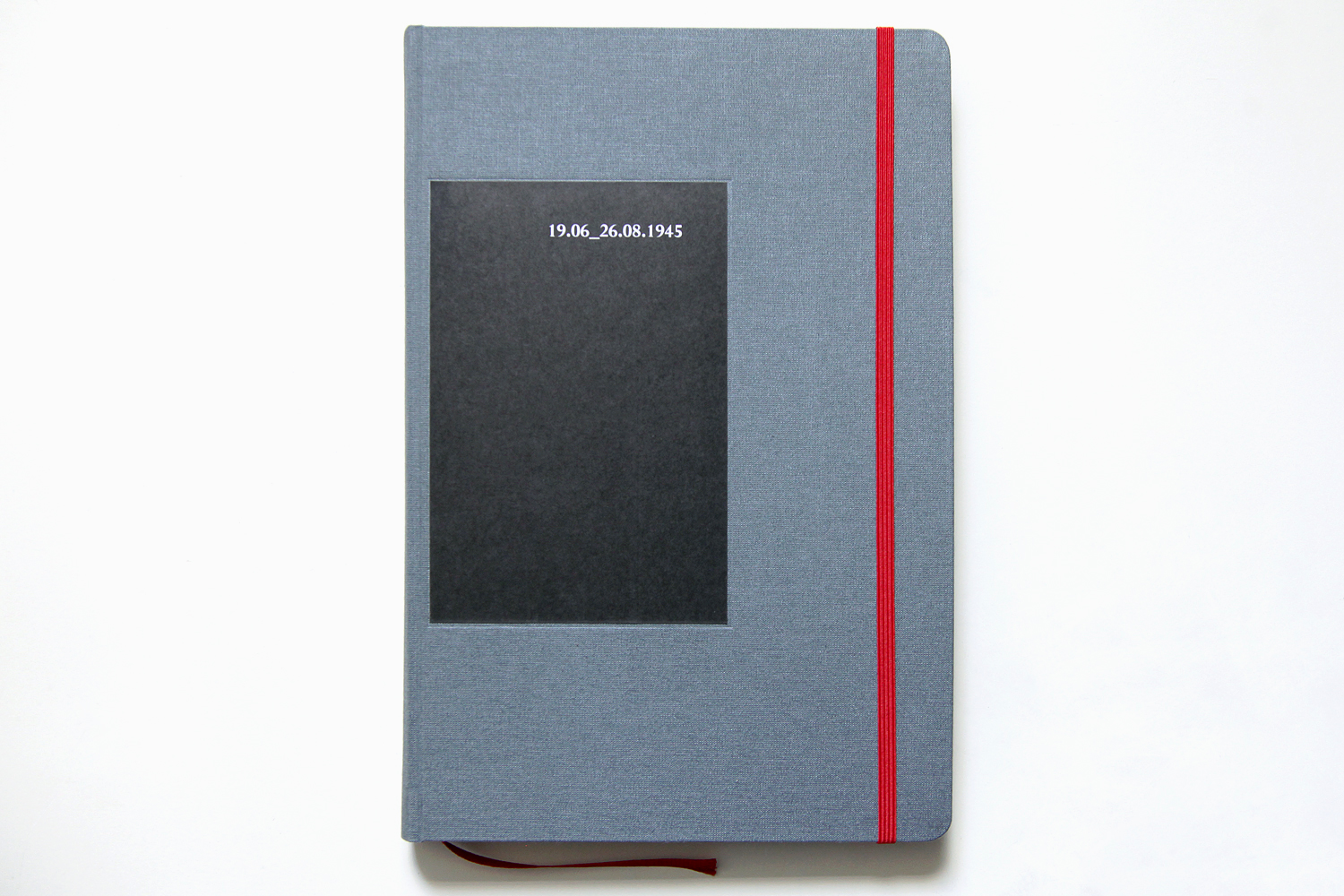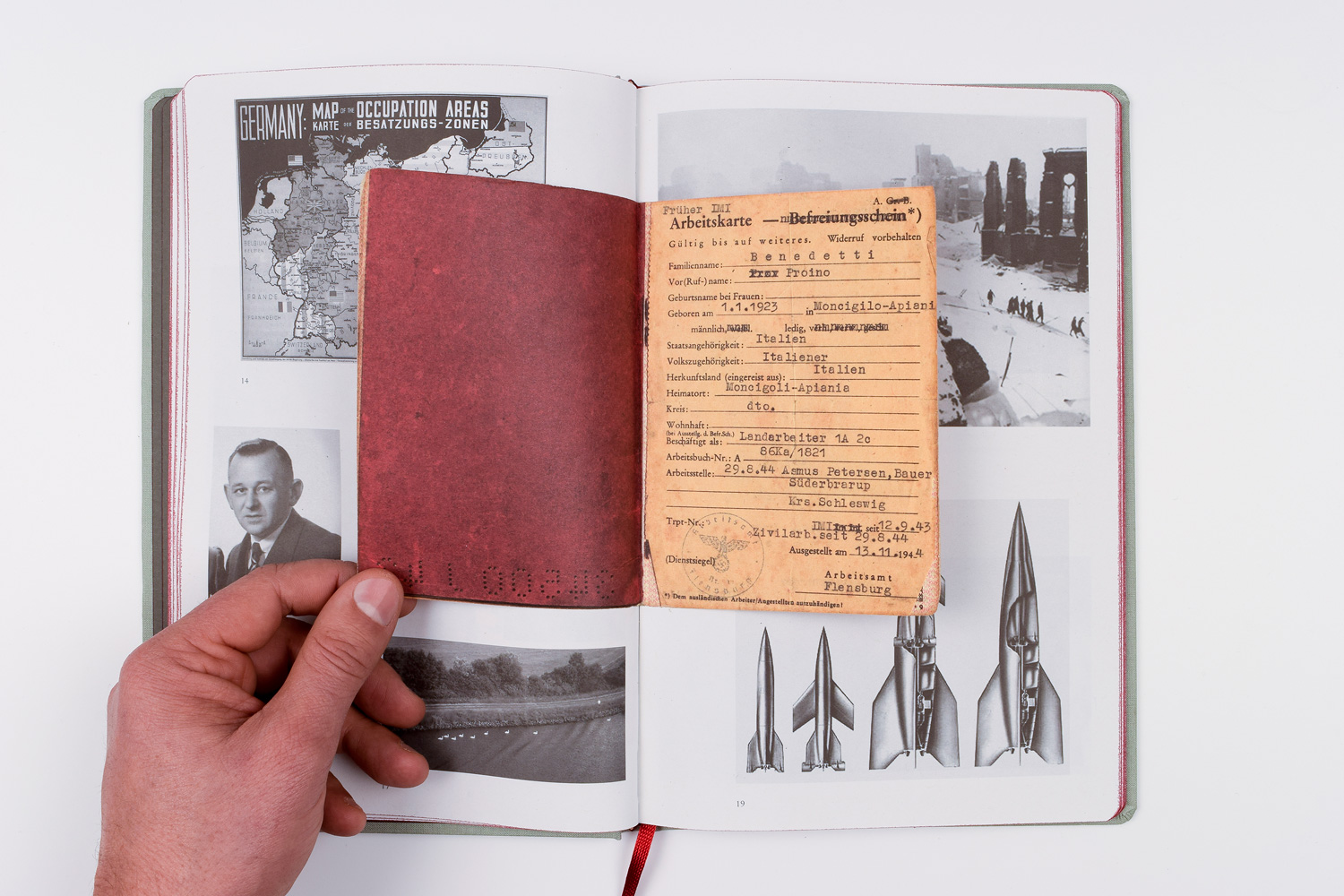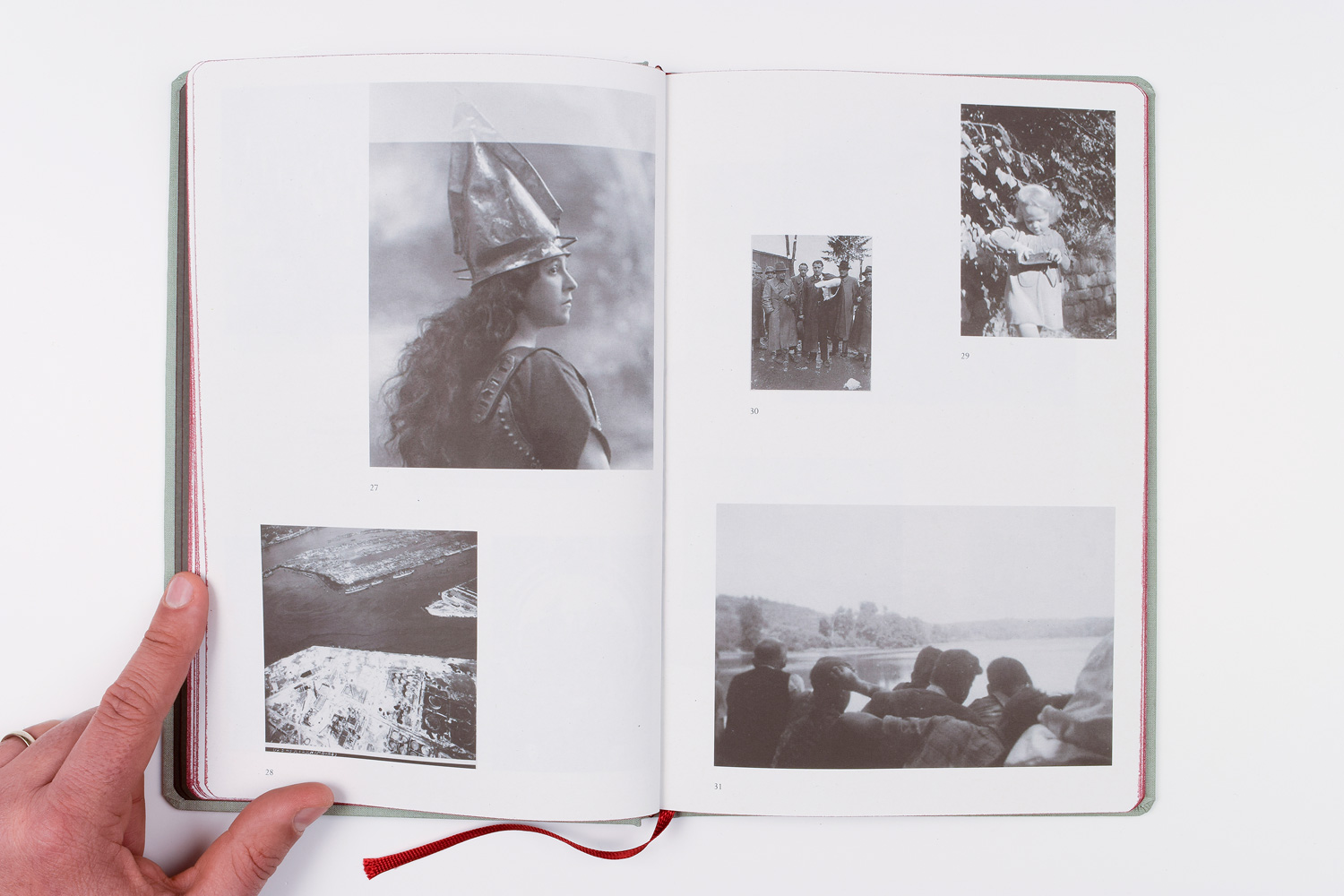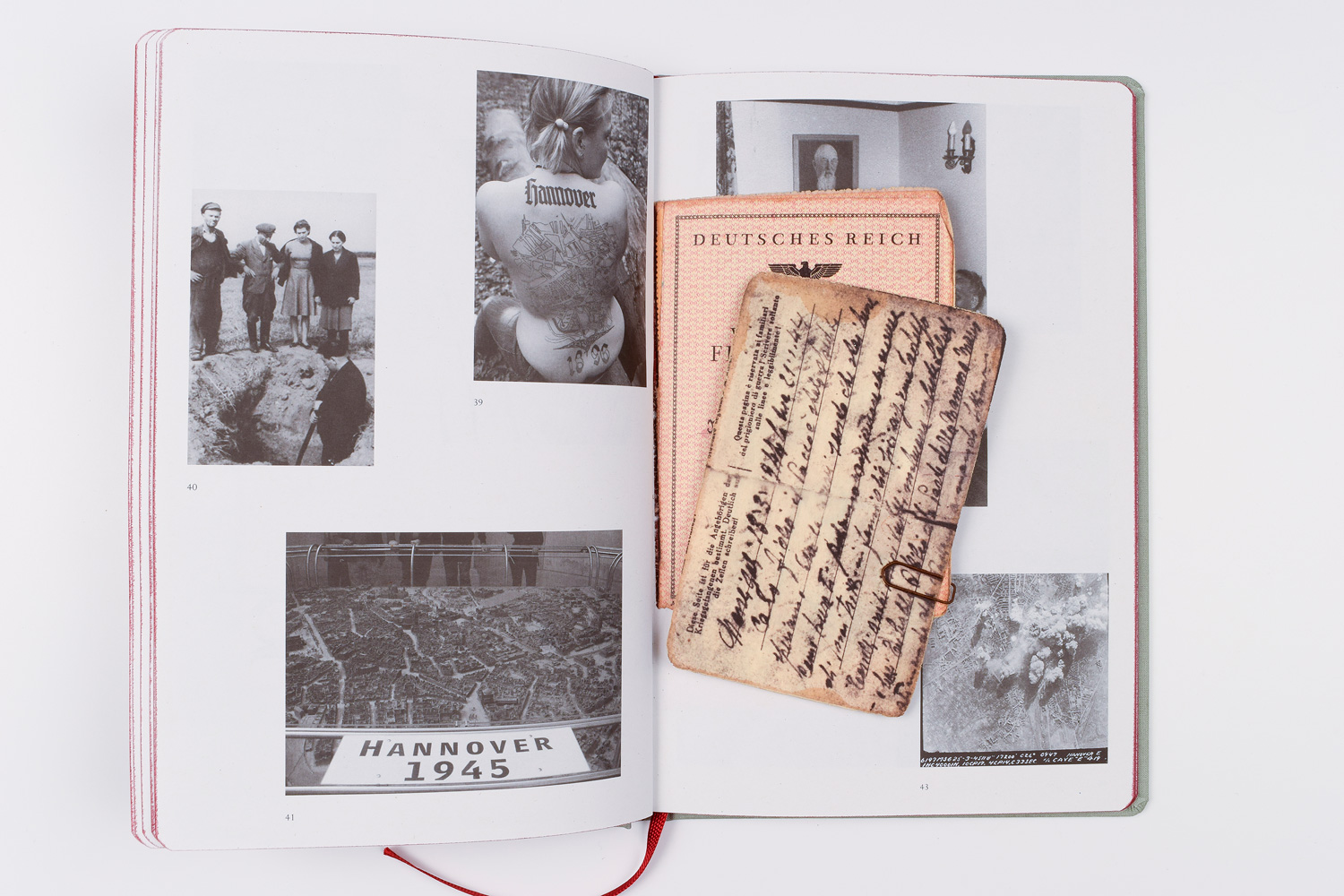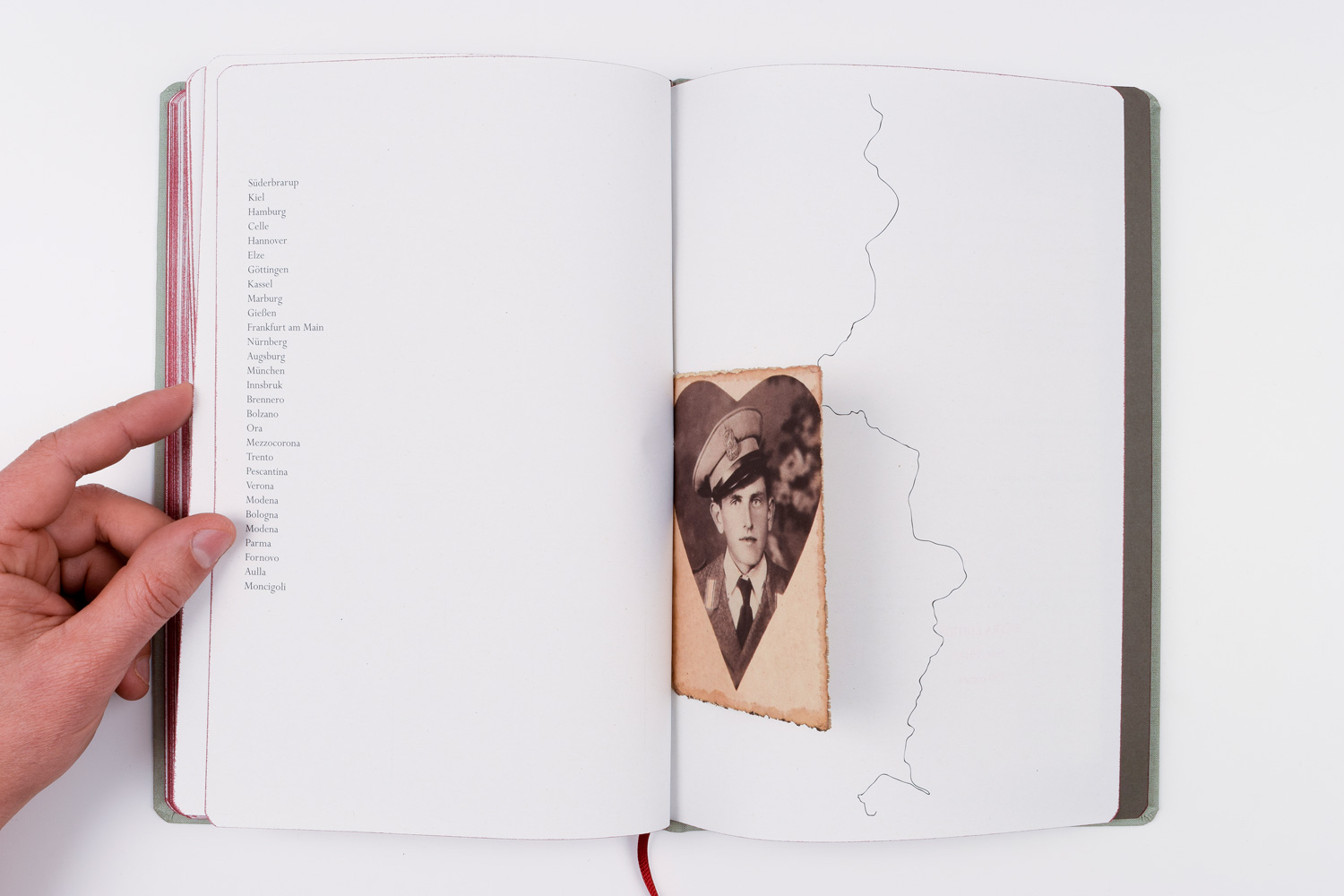Andrea Botto, artist
19.06_26.08.1945, book, published by Danilo Montanari Editore, Ravenna 2014
At the end of the Second World War, the artist’s grandfather, Primo Benedetti, comes home after two years of imprisonment as an Italian Military Internee in the German labor camps. He carries a small journal upon which he takes note of all the cities passed along his journey. About seventy years later, Andrea Botto retraces this itinerary within an artist’s book, published in 2014 by Danilo Montanari Editore, made of images found on the web and the reproduction of several documents that belonged to his grandfather. The project reflects upon the subject of memory and the use of images in contemporary society, confronting the virtual relationship with faraway places with the physical intimacy of documents found in the grandfather’s notebook. Silently recalling an individual drama, Botto brings us to reflect upon the pain and brutality of history and to consider the visual potential of images.
On which fields of knowledge are you focused?
Visual culture.
What is the object of your research?
I use photography as a means for dissecting the world in order to express its complexity and to expose its stratifications.
Could you identify some constants in your work?
Time, collective imagination, as well as the current transformations that mark the present age, are the key themes of my work, which explores the unstable equilibrium that governs the landscape, through the aesthetics of destruction.
How did you find out about Aby Warburg’s work?
I found out him through visual culture studies, but I guess I knew unconsciously his work long before, given his seminal influence in many fields. I am interested in the chameleon-like power of photography and to verify how images can activate an imagery already present in the mind of the viewer.
How would you define an Atlas?
Quoting Luigi Ghirri, it is the book that contains all the possible voyages.
Atlas as a conceptual, formal and mnemonic device; do you use it in your work?
I guess I use it in a mental way or in order to give to my project a structure that can keep together even very different contents.
Do you know about the existence of Mnemotechnics?
I don’t know them specifically, but in my work I have often dealt with memory sedimentation processes, finding many affinities between our brain and the internet, for example.
During the making of 19.06_26.08.1945 I collected some images on the web with their own “http” string references, that you can find in a directory at the end of the book. Years later, I tried to look for those images again at the same addresses, but some of them had been deleted, others had changed sites or had been used in other contexts. This made me think about the way our brain records information, stores them and how it selects some of them to be erased. It is probably a sort of safety procedure in order not to overload and make the system go haywire since the physical space available is not infinite. I guess the web can work in a similar way, deleting, moving or reconfiguring information in a sometimes fortuitous and unexpected way. We think to it as an infinite virtual space, but it is the exact opposite.
Which mnemonic system guides the organization of your material?
I don’t have one in particular. I tend to follow visual associations, as in the game Il bersaglio (The Target) of La settimana enigmistica, and to bring everything back to the “photographic”. As Ando Gilardi said: “The image of an image is always an image.”
Are there visual and emotional formulas (pathosformeln) in your project?
Yes and I’m really interested in re-contextualizing.
In your work, do you identify formal or conceptual recurrences such as repetitions and disruption, distance and proximity, identity and migration, conflict and colonization?
I don’t like recurrence formulas, as the repetition of a plot, but I think my work deals with distance and conflict in some way. Looking is never a neutral act.
In your work, what is the balance between image and text?
I also consider the text as an image. Let’s not forget that Photography is the only medium born with a caption (think to Nicephore Niepce’s View from the Window at Le Gras). Usually the text is used to describe or specify the content of the image, to explain its mechanisms or to expand its imagery. I used it to increase the sense of ambiguity of photography, to create a short circuit between what it shows and what it alludes to or even (and that’s what interests me most) to create a context, an ‘environment’ (as McLuhan would say) to the images. In 19.06_26.08.1945, for example, I used the texts as visual documents with their materiality and their sense of reality, because I wanted to give a physical body to memory. As said before, I tend to relate everything to the ‘photographic’, term by which I mean the logic of image functioning and its relationship with reality, with the author and with the users, typical of photography but also common to many other expressions of contemporary art. I don’t like and I’m not interesting in visual storytelling at all. I think photography is the least appropriate medium to tell a story in a narrative way. I apologize if I may seem a little ‘tranchant’ in my judgment, but I think it’s time to get rid of certain twentieth-century wrong legacies and mythologies. Art always comes from a NO.
Thinking about Warburg’s ‘good neighborhood rule’, what are the books that underpin your project?
Atlante, Luigi Ghirri
Evidence, Larry Sultan and Mike Mandel
Phototeca, Ando Gilardi, Roberta Clerici e Giancarlo Iliprandi
Una storia italiana, Silvio Berlusconi
Redheaded Peckerwood, Christian Patterson
Ways of seeing, John Berger
Misurazioni, Mario Cresci
War Primer 2, Adam Broomberg and Oliver Chanarin
Oceanomania, Mark Dion
On this Site, Joel Sternfeld
Andrea Botto (Rapallo, 1973), is an Italian fine-art photographer and lecturer. His projects have been acknowledged by grants and awards and have been exhibited in international museums, including Bundeskusthalle in Bonn (2005), Fotomuseum Winterthur (2005), Stiftung Kultur in Cologne (2006), MAXXI in Rome (2007-2016), Fundacion Canal Isabel II in Madrid (2007), MoCA in Shanghai (2010), Villa Croce in Genoa and Benaki Museum in Athens (2015), Kolkata Centre for Creativity (2019). His works are to be found in private and public collections. He carries out and manages editorial and corporate projects, specializing in decommissioning and infrastructure. He cooperates with public authorities and multidisciplinary groups for the study of landscape, geology, environment and memory of historical events. Along with the professional activity, Botto usually gives lectures and educational workshops and he is in charge of several cultural events. He is one of the founding members of the artistic collective Fotoromanzo Italiano.
